When Vincent Calabrese and Svend Andersen had the idea to create a loose grouping of independent watchmakers back in the late 1970s, the idea was partially born because Calabrese was Italian and Andersen was Danish, but both were living and working in Switzerland (they still do) to practice their craft.
In the wake of the quartz crisis of the 1970s and early ’80s, the mechanical watch had all but died out. However, there were still a few master watchmakers and creators who firmly believed in what they were doing and persevered.
And our horological microcosm is all the richer because of it now.
Though the majority of high-end watchmaking in the world today takes place in Switzerland, a significant percentage of the 33 official A.H.C.I. (Academy of Independent Horological Creators) have other nationalities and the the group remains a place where diversity is not only accepted, but truly rules.
Nowhere is this better exemplified than the friendship between Russian Konstantin Chaykin and Ukrainian Valerii Danevych, two artists peacefully co-existing in goodwill and appreciation to produce their high expressions of art side-by-side – if not geographically, then emotionally.
Today, more than ever, the value of artistic expression in what can otherwise be a cold world cannot be underscored enough. It creates beauty, bonds people, and channels emotion. One of the truer purposes of the A.H.C.I. is therefore to act as a sort of horological United Nations, promoting art and bringing people closer rather than dividing them.
Russian Watchmaker Konstantin Chaykin
I had the honor of meeting A.H.C.I. member Konstantin Chaykin, who was born in St. Petersburg but now lives in Moscow, for the very first time at Baselworld 2014. This also presented the opportunity to see his new Carpe Diem watch.
The idea behind the Carpe Diem was to depict the abstract idea of time using classic metaphors from the books, music and art that are traditionally accepted by scholars as the most influential in shaping Western culture.
The symbols he used in the watch thus included inspiration by paintings by German Renaissance painter Bartholomäus Bruyn the Elder, Dutch Golden Age painter Pieter Claesz and Ukrainian painter Heorhiy Narbut.
The main character on the Carpe Diem dial is fascinating: the Greek god Chronos, also known as Father Time. Chaykin invented a patented technical innovation to create the illusion of sand flowing through Father Time’s hourglass on the dial. The moving sand serves as the minute indicator.
While Chaykin’s pieces are always very clever, I find this five-piece limited edition to be extremely thoughtful as well: it is simultaneously mechanically innovative and artfully meaningful at the same time. No wonder, for Chaykin says he always finds time to visit museums and art galleries when he travels.
For more information, please visit www.konstantin-chaykin.com.
Quick facts Carpe Diem
Case: 45 mm, hand-engraved rose gold
Movement: Manually wound Caliber K 01-4 with gold escape wheel
Functions: minutes (shown by hourglass), hours; day of week
Limitation: 5 pieces
Ukrainian Valerii Danevych
Valerii Danevych was born in 1968 in the capital of the Ukraine, Kiev, where he still works today. He comes from a family who has worked for generations as cabinet makers – which explains his preferred material: wood.
Like Chaykin, Danevych is a self-taught horologist.
The idea to create a complicated mechanical movement completely in wood was always on his mind, and in 2005 he set out to do just that.
For me, the highlight of Danevych’s collection is the Retrograde model, which contains a completely functioning flying tourbillon with a retrograde display. It took a full seven months to complete in 2013, over 1,800 hours of meticulous work.
He used eight different kinds of woods in making this timepiece, which lends it a very three-dimensional look: apple-tree burl, plum tree wood, walnut, birch, wood from an Australian Guaiacum, Crimea boxwood, bamboo, and African Bubinga.
The smallest wooden components in the Retrograde’s movement constitute a pinion of just 0.9 mm in diameter and an even smaller bearing pin coming in at 0.12 mm in diameter.
Eight springs are in used in the movement, four of which were crafted in metal and the other four in bamboo. Two coaxially placed wooden cams make the retrograde mechanism possible.
For more information, please visit danevych.com/en/collection.
Quick facts Retrograde
Case: 46 x 18 mm, wood
Movement: manually wound with flying tourbillon, 154 components, 150 of which are completely crafted in wood (four metal springs)
Functions: minutes and hours, both retrograde
Limitation: unique piece
Leave a Reply
Want to join the discussion?Feel free to contribute!

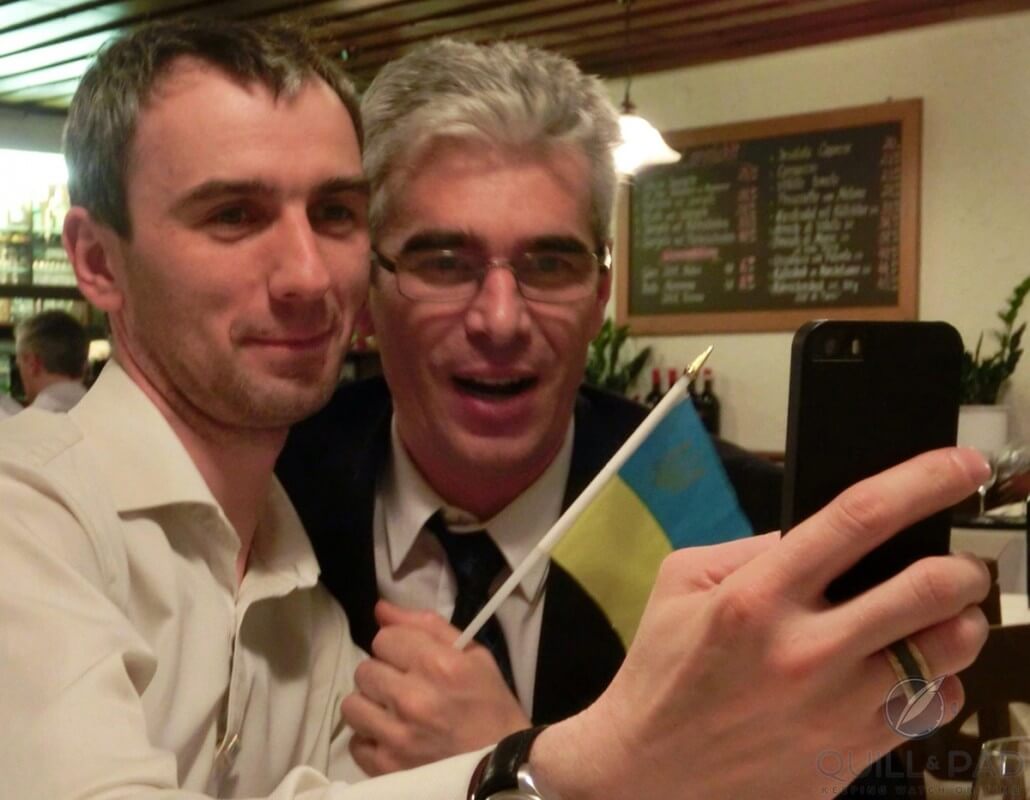
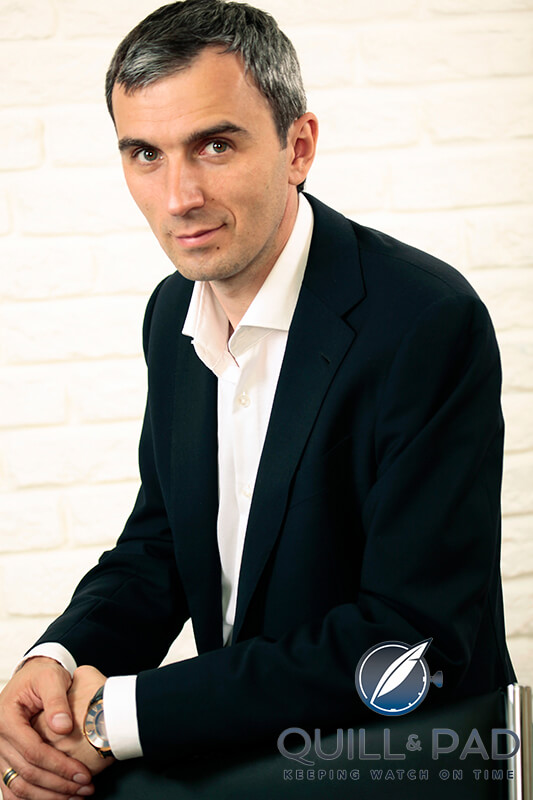
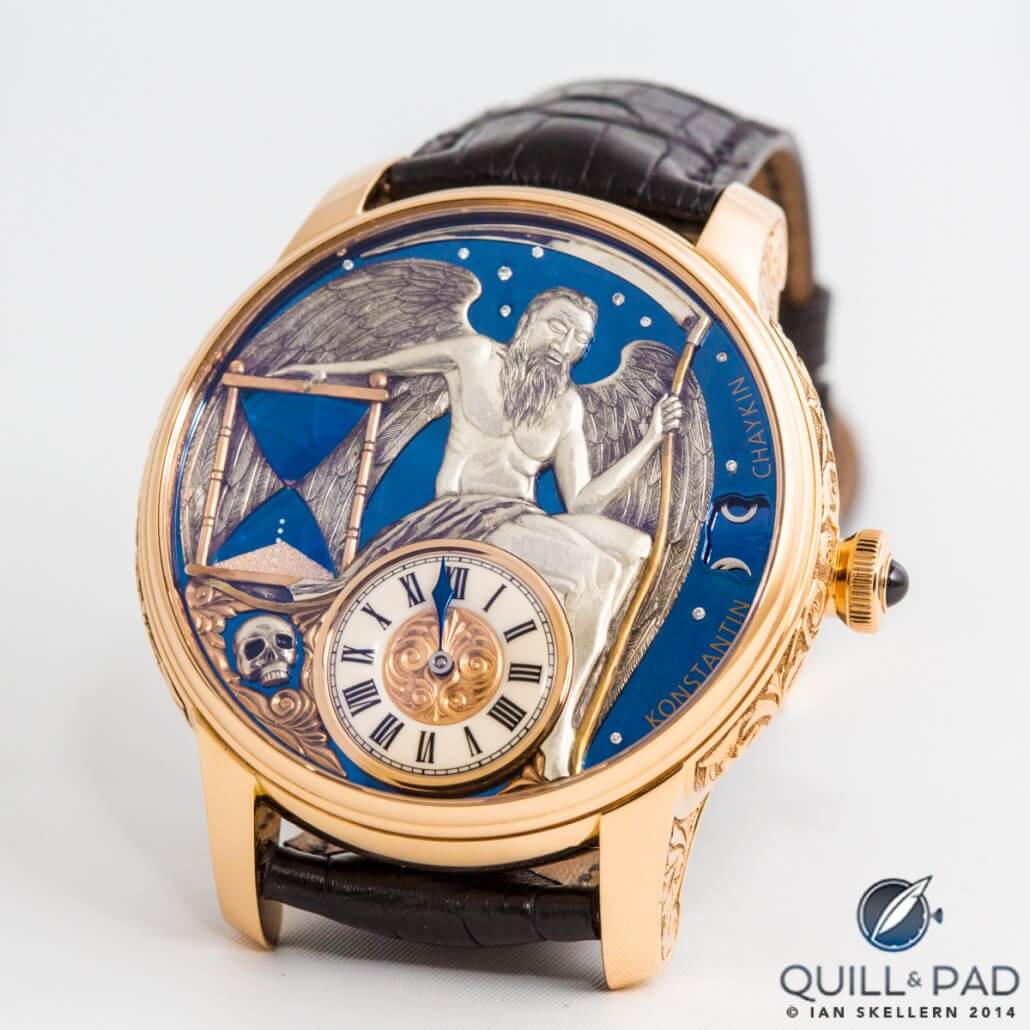
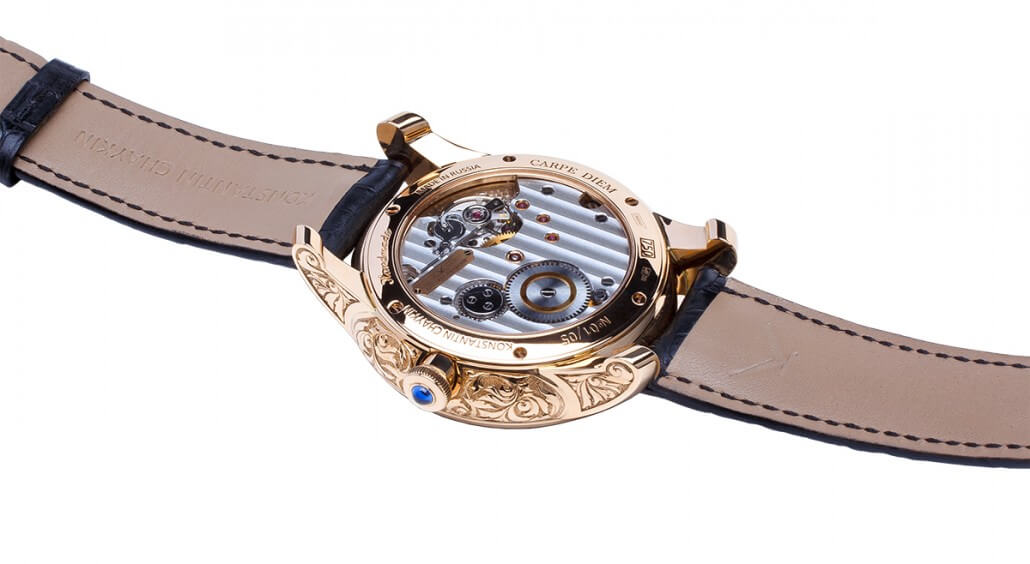
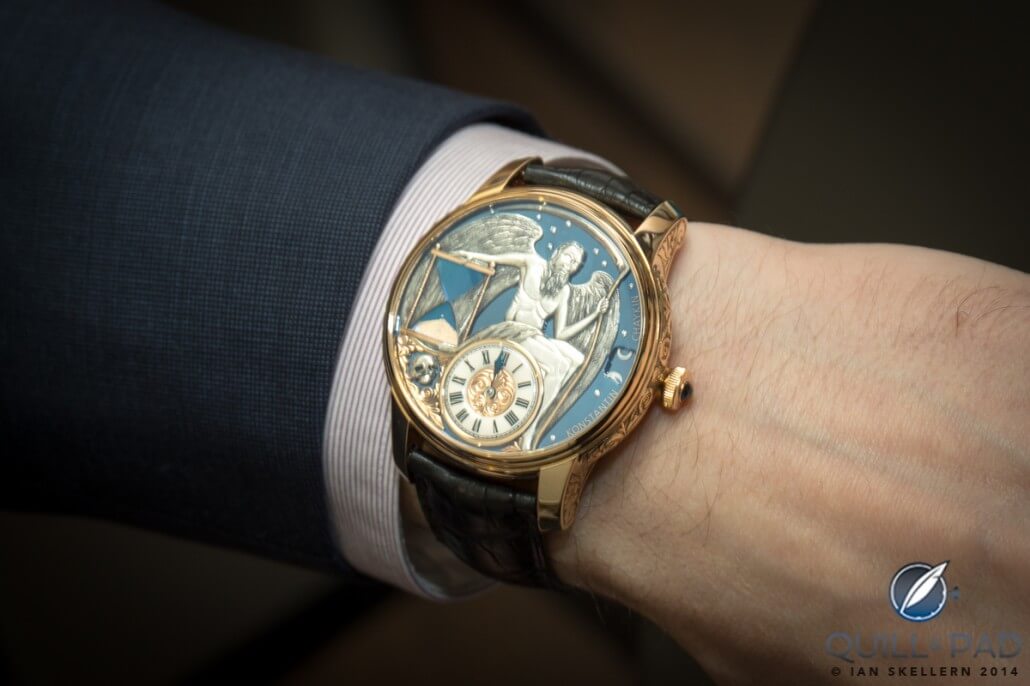
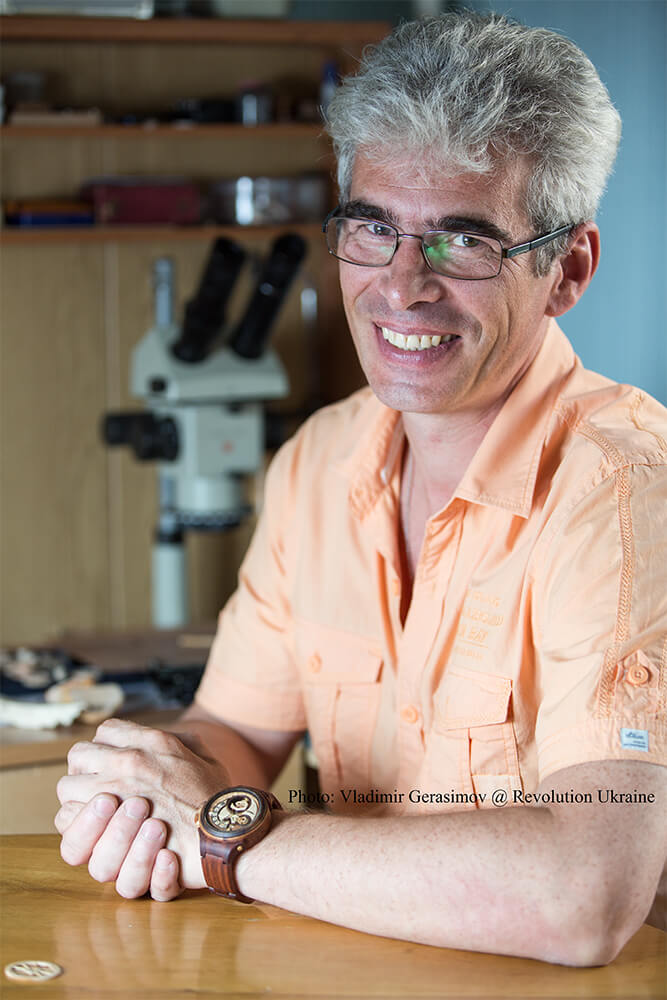
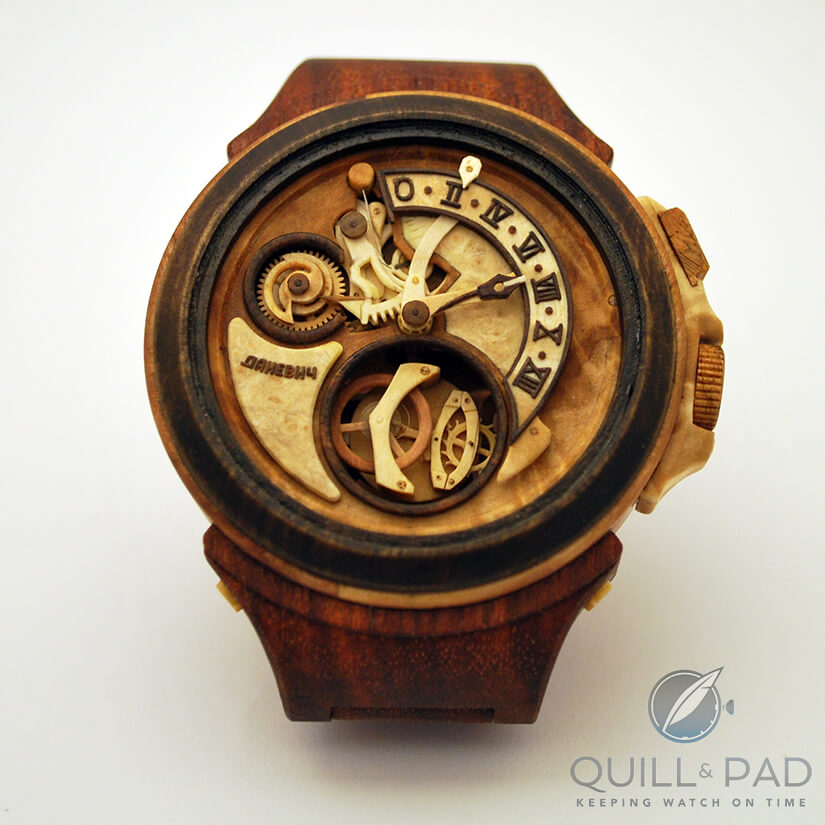
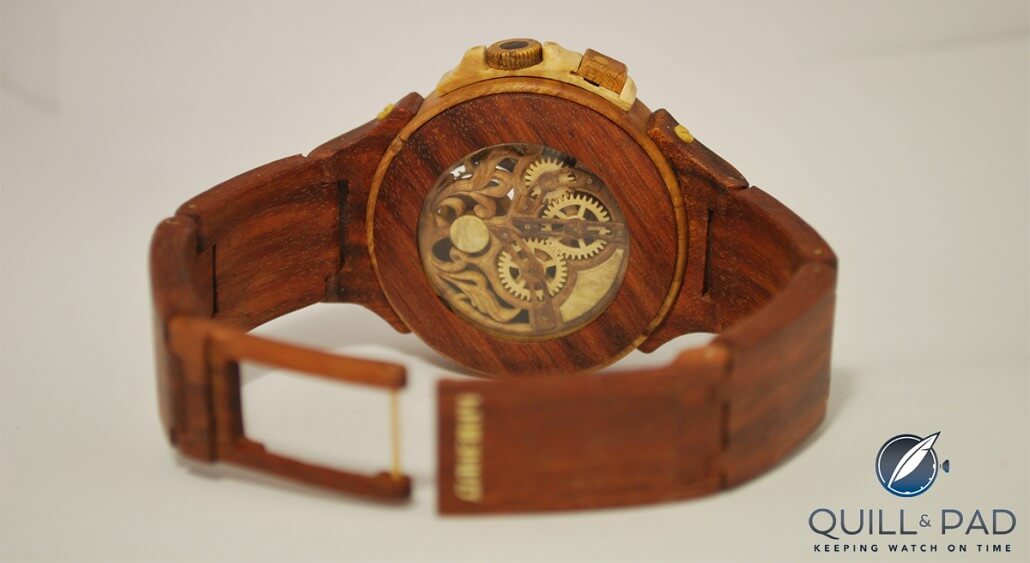
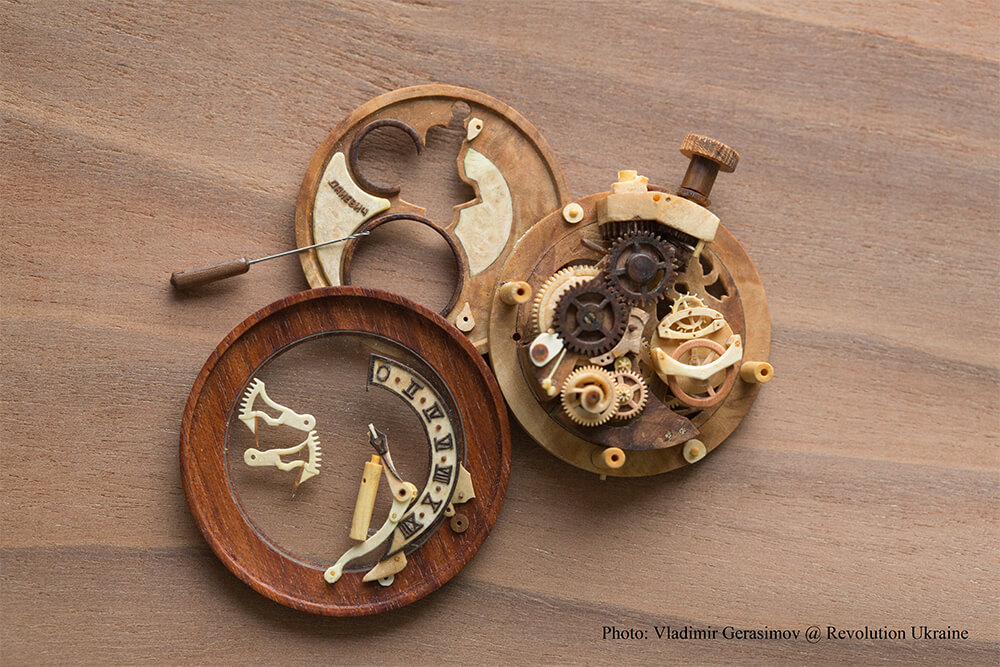
Valerii Danevych watch and accessories store https://www.etsy.com/shop/DanevychWatch